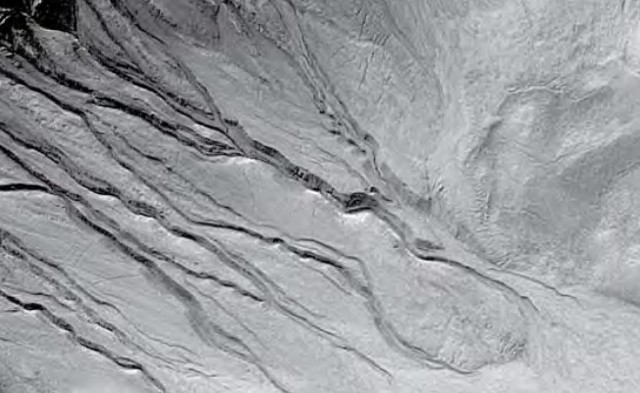Mars as the abode of life
Mars As The Abode Of Life was the title of a book published in 1908 by Percival Lowell. He was convinced that the canals of Mars were proof positive of the existence of an advanced civilization that had built a planet-wide irrigation system to ship water from the polar ice-caps to the Equator. At the time, the idea was in the air. A decade earlier, English science-fiction writer H.G. Wells had written a fictionalized account of a Martian invasion of the Earth, The War Of The Worlds.
In fact, the canals of Mars are one of the biggest examples in history of the danger of sloppy translation. These apparent lines on the Martian surface were first observed by the Italian astronomer Giovanni Schiaparelli in 1877. He called them canali, which in Italian means channels, and he never meant there to be any implication that they were artificial. Only when the word got mistranslated into English as canals did that idea get going.
It has now been demonstrated that the canali were nothing but optical illusions. But the detailed knowledge we now have of the Martian surface suggests that although the locals have not carried out any major civil engineering, it is impossible to rule out the possibility of Martian life on a modest scale in the past, and it may even cling on today.
All views of the Martian surface show something that on Earth would be regarded as conclusive proof of the presence of water. On a large scale, there are features resembling river valleys, while small-scale views show layered rocks and apparent dried-out mud and pebbles that to the eyes of Earthly geologists can only have been created by water. They may be just as wrong as Lowell, but they are working from a stronger evidence base.
Because water is regarded by humans as a definite must for life, this discovery encourages belief in Martians, albeit small ones. In addition, there are signs that some of the water-sculpted landscapes of Mars may be recent.
But is there any more direct proof of life on Mars? As long ago as 1976, two US Viking spacecraft landed on Mars and put some Martian soil through an experiment designed to detect biological activity. The argument about the results is still going on, with some scientists believing they do show life but NASA being far more cautious.
Another approach is to look at the Mars meteorites that sometimes land on the Earth. Thirteen of them are known. One landed in 1911 at a place called Nakhlain Egypt and killed a dog. But the one called Allen Hills 84001, found in Antarctica in 1984, is more interesting because it contains tiny spherules that may be fossil bacteria. Or they may be inorganic crystals. Or they may be Earthly bacteria that have found their way into the meteorite while it lay on the Earths surface. The meteorite also contains minerals that may have been deposited by bacteria, and perhaps organic compounds. Either way, the rock left Mars billions of years ago and the species it contains, if any, may since have become extinct.
In 2004, methane was detected in the atmosphere of Mars by telescopes on Earth and by a European satellite orbiting Mars. Methane gets broken down in the Martian atmosphere, so if it is there, it is being replenished by some means. On Earth there are several sources of methane but nobody can find any very obvious ones on Mars. Mars has plenty of dead volcanoes, a prime source on Earth, but no live ones have been glimpsed. Another obvious methane source is bacteria, which would be consistent with the pro-life view of the Viking results. The new generation of Mars spacecraft promises to sort all this out in the near future. If the answer is a yes, the headlines will be unmissable.
